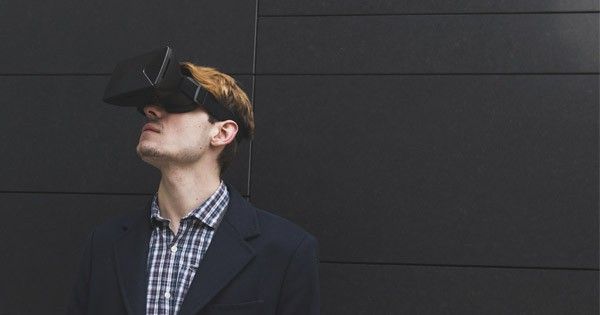Stay connected
Subscribe to our Inside WEX blog and follow us on social media for the insider view on everything WEX, from payments innovation to what it means to be a WEXer.
"*" indicates required fields

Are consumers ready to design their homes in virtual reality? Are manufacturers ready to design parts using a headset and have the designs sent to an outsourced 3D printer, or use augmented reality to improve quality control and ease the manufacturing process? As the buying process becomes more immersive, the next logical step rise of virtual reality and augmented reality devices is for consumers and businesses to use it in the purchase process.
While the past century has seen hits and misses in attempts with virtual reality, the past five or so years have seen VR transform from a gimmick to a powerful and engaging new medium. This has been driven by several trends:
Combined, these trends grew consumer desire for VR experiences and increased opportunity for businesses looking to create value for themselves in the virtual space.
After big announcements at Consumer Electronics Show and Mobile World Congress, as well as pervasive Samsung Gear VR ads, virtual—and soon to be augmented—reality devices are already finding use:
Chinese Ecommerce giant Alibaba announced its own virtual reality lab, dubbed Gnome Magic Lab, which looks to integrate virtual reality into the shopping process for the 400 million Alibaba users.
In a press announcement, former Facebook engineer Zhao Haiping, who is on the Alibaba’s Gnome Magic Lab team, said VR could enable customers to shop virtually on New York’s Fifth Avenue from the comfort of their own home. On a more practical level, Alibaba wants to help merchants use VR to sell on its sites. The company has said it has already created VR visuals for hundreds of products.
Recently announced, hardware store Lowe’s has announced its new virtual reality experiences in 19 stores throughout the United States.
Using the Lowe’s Holoroom app, customers will be able to design a kitchen or bathroom, all without hammering a single nail. Upon completion, the designs will be turned into YouTube360 videos for customers to enjoy and share whenever and wherever they choose.
In select stores, virtual reality technologies including Oculus Rift or Google Cardboard will allow customers to be fully immersed in their personal design. See more at Lowes.com/Holoroom.
Additionally, Microsoft partnered with Lowe’s to switch from virtual to augmented reality in two stores, building their kitchen to scale using Microsoft HoloLens.
This is not the first time a retailer has improved the retailer experience for users: the 2014 IKEA catalog, when paired with an app, allowed users to ‘furnish’ a real room with digital IKEA furniture.
Using Microsoft’s HoloLens, Volvo partnered with Microsoft to take a different look at how customers interact with cars. In a press release, the company highlighted a demo of the HoloLens, showing how it might be used in future to redefine how customers first encounter and explore a car, as well as how cars might be bought and sold in future. The platform would allow customers to customize dimensions, strip the car down to the wheel base, explore colors and styles, better understand the features in the car, and more.
Additionally, Tesla has reportedly begun to incorporate wearable technology in its manufacturing process, seeking to increase the manufacturing efficiency using Google Glass.
With Microsoft HoloLens still in its developer stage, the augmented reality platform could change the way users work, shop, and even learn. Among its early uses, Microsoft has partnered with Autodesk for collaborative product design, Case Western University for an improved body learning experience, Trimble for architecture, and more. See the list of uses and videos here.
Additionally, new uses are popping up rapidly:
Virtual and augmented reality looks to be the next big thing for entertainment, media, and more, and, with its rise, comes the need for ecommerce and payments capabilities that support and utilize it. At the Vantiv Money20/20 Hackathon, a 24-hour event was hosted that focused on innovative ways to use technologies to develop a product that makes it smarter, faster and easier for people to buy, sell or pay via the Vantiv APIs.
As the market for virtual and augmented reality technology becomes more democratized, its role as an ecommerce facilitator will only grow. Just as Warby Parker changed the way people shop for glasses, creating an opportunity for platforms like ‘The Mall on Xbox One,’ the market for virtual and augmented reality ecommerce is only in its beginning.
We look forward to sharing the latest updates in the payments and ecommerce world, including that of VR/AR payments. Stay up to date by following us on LinkedIn and seeing the following resources:
Subscribe to our Inside WEX blog and follow us on social media for the insider view on everything WEX, from payments innovation to what it means to be a WEXer.
"*" indicates required fields